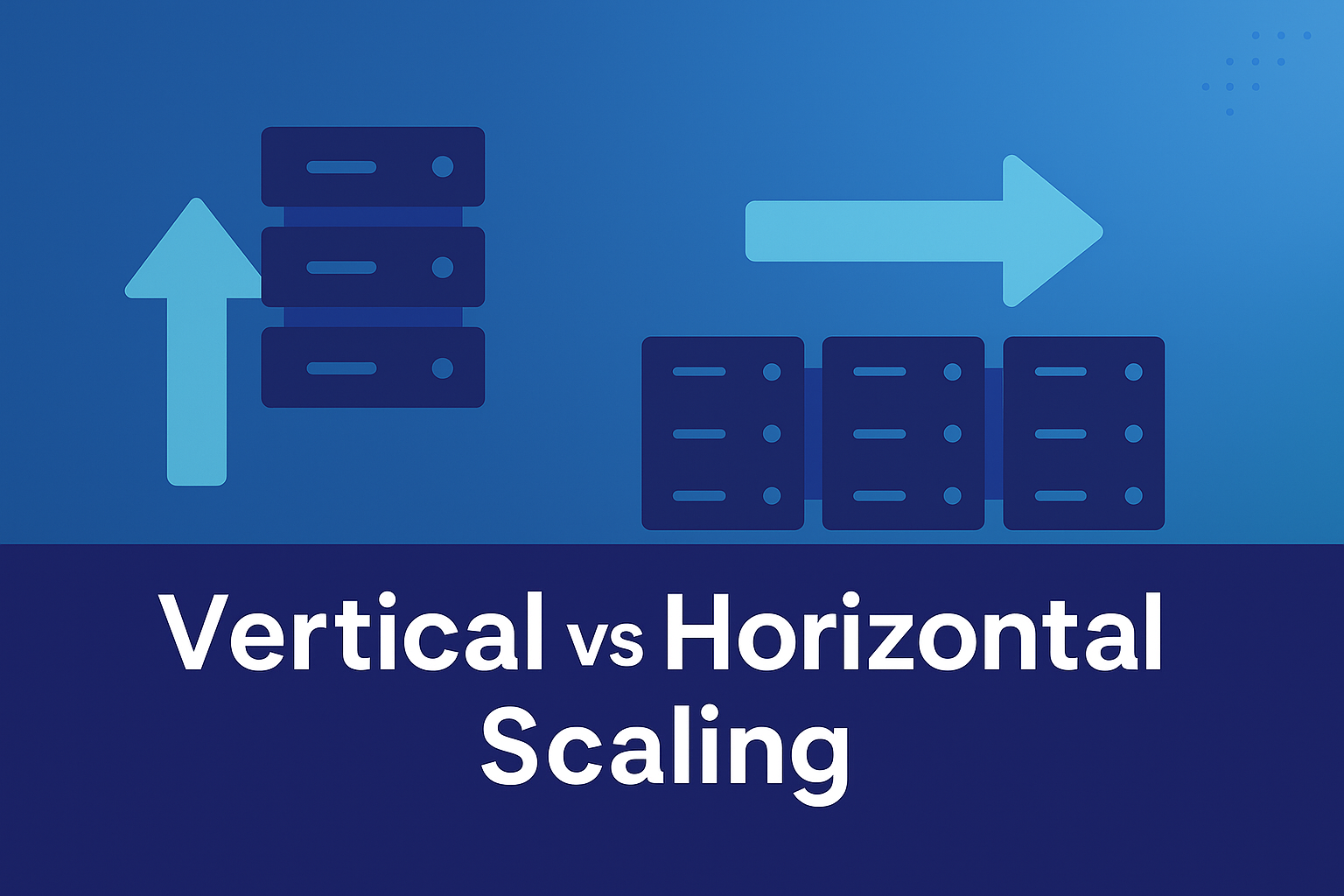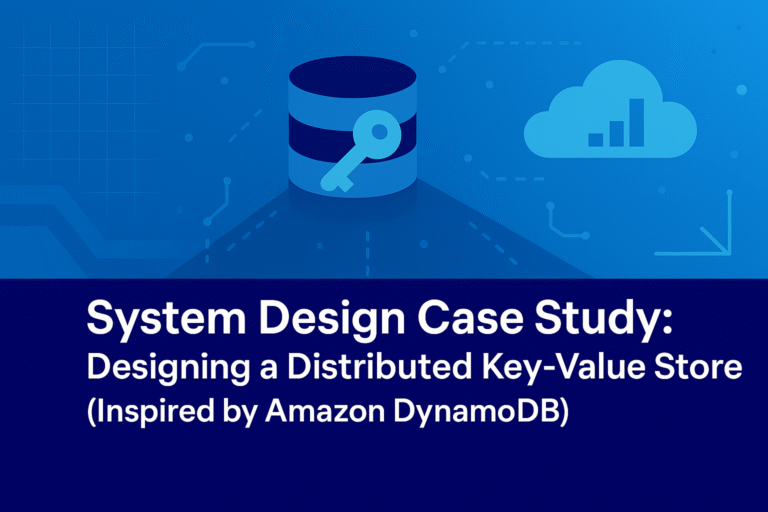Concept Explanation
Vertical and horizontal scaling are two fundamental approaches to enhancing a system’s capacity to handle increased load, such as higher user traffic, data volume, or computational demands. These strategies are integral to system design, enabling architects to ensure performance, reliability, and scalability as demands evolve. Vertical scaling focuses on upgrading the resources of a single machine, while horizontal scaling involves adding more machines to distribute the workload. The choice between these approaches depends on factors such as cost, complexity, workload characteristics, and long-term growth objectives, making them complementary yet distinct paradigms in modern distributed systems.
The decision to scale vertically or horizontally impacts not only the technical architecture but also operational considerations, including maintenance, fault tolerance, and infrastructure costs. Both methods aim to maintain acceptable latency, throughput, and availability, but they differ in their implementation, scalability limits, and suitability for different use cases, such as monolithic applications versus cloud-native microservices.
Vertical Scaling
Vertical scaling, also known as “scaling up,” involves enhancing the capabilities of an existing server or node by increasing its hardware resources. This includes adding more CPU cores, increasing RAM, expanding storage capacity, or improving I/O performance on the same machine.
- Implementation: Upgrades are typically performed by replacing or augmenting hardware components. For example, upgrading a server from 16GB to 64GB of RAM or from a 4-core to an 8-core processor exemplifies vertical scaling. In cloud environments, this can be achieved by resizing virtual machine instances (e.g., AWS EC2 instance type upgrades from t2.medium to m5.large).
- Advantages:
- Simplifies system design by maintaining a single-node architecture, reducing the need for distributed system management.
- Ensures data consistency within a single instance, avoiding the complexities of synchronization across multiple nodes.
- Suitable for applications with predictable, moderate growth or where distributed systems are impractical due to latency or cost constraints.
- Limitations:
- Constrained by physical hardware limits, such as the maximum number of CPU cores or memory capacity of a single server.
- Often requires downtime during hardware upgrades, disrupting service availability (e.g., 30-60 minutes for server replacement).
- Becomes economically unfeasible at scale due to the high cost of premium hardware and diminishing returns (e.g., doubling RAM may yield less than proportional performance gains).
- Use Case Example: A small enterprise database application handling 1,000 transactions per second might vertically scale by upgrading from 8GB to 32GB RAM to accommodate a 50% traffic increase, avoiding the need for a distributed setup.
Horizontal Scaling
Horizontal scaling, also known as “scaling out,” involves adding more machines or nodes to a system, distributing the workload across a cluster to increase capacity. This approach relies on replicating application instances or database shards, managed through load balancers or distributed frameworks.
- Implementation: Additional nodes are deployed, and traffic is distributed using load balancers (e.g., NGINX, AWS Elastic Load Balancer) or distributed databases (e.g., Cassandra, MongoDB with sharding). For instance, an e-commerce platform might add five new web servers to handle a surge from 10,000 to 50,000 concurrent users. In cloud environments, auto-scaling groups (e.g., AWS Auto Scaling) dynamically adjust node count based on demand.
- Advantages:
- Offers virtually unlimited growth potential by adding nodes as needed, ideal for handling exponential traffic increases.
- Enhances fault tolerance through redundancy, as the failure of one node does not halt the entire system.
- Aligns with distributed architectures like microservices, supporting geographic distribution and resilience.
- Limitations:
- Introduces complexity in maintaining data consistency across nodes, often relying on eventual consistency models.
- Requires sophisticated load balancing and synchronization mechanisms, increasing operational overhead.
- May elevate costs due to the management of multiple servers, including networking and maintenance expenses.
- Use Case Example: A global social media platform processing 1 million requests per second might horizontally scale by adding 100 new server instances across multiple regions, distributing the load and ensuring sub-200ms latency.
Comparative Analysis
| Aspect | Vertical Scaling | Horizontal Scaling |
|---|---|---|
| Resource Approach | Enhances a single machine’s power | Adds more machines to the system |
| Scalability Limit | Limited by hardware maximums | Limited by infrastructure and design |
| Complexity | Low (single-node management) | High (distributed system management) |
| Downtime | Often required for upgrades | Minimal (dynamic addition of nodes) |
| Cost | High for premium hardware | Higher initial setup but scalable |
| Consistency | Intrinsic (single node) | Challenging (eventual consistency) |
| Fault Tolerance | Low (single point of failure) | High (redundancy mitigates failures) |
| Use Case | Small to medium workloads | Large-scale, distributed systems |
Strategies for Effective Scaling
- Hybrid Approach: Combine vertical and horizontal scaling for optimal results. For instance, vertically scale a database server to handle increased I/O, while horizontally scaling web servers to distribute user traffic.
- Monitoring and Metrics: Utilize tools like Prometheus and Grafana to track resource utilization (e.g., CPU > 80%, memory > 90%) and trigger scaling actions based on thresholds.
- Load Testing: Conduct simulations with tools like JMeter to validate scaling performance under load (e.g., 100,000 requests/hour), ensuring latency remains below 200ms.
- Auto-Scaling Configuration: In cloud environments, set policies (e.g., add 2 nodes if request rate exceeds 1,000/second for 5 minutes) to automate horizontal scaling, complemented by vertical adjustments during off-peak maintenance.
- Data Partitioning: For horizontal scaling, implement sharding or replication (e.g., MySQL Master-Slave) to distribute database load, with careful key selection to avoid hotspots.
Implementation Considerations
Implementing vertical scaling requires scheduling upgrades during maintenance windows (e.g., 2 AM IST on September 23, 2025) to minimize disruption, with rollback plans for hardware failures. Horizontal scaling necessitates configuring load balancers with health checks and ensuring application statelessness or session replication. Both approaches benefit from caching (e.g., Redis) to reduce load and regular testing to validate failover and performance. Cost analysis should balance hardware upgrades against multi-node infrastructure, with metrics like uptime (99.9%), throughput (10,000 transactions/second), and cost-per-user guiding decisions.
Trade-Offs and Strategic Decisions
Vertical scaling offers simplicity and is cost-effective for early-stage systems but becomes a bottleneck as demand grows, making it suitable for workloads with predictable limits (e.g., internal tools). Horizontal scaling provides flexibility and resilience but increases complexity and cost, ideal for large-scale, user-facing applications (e.g., e-commerce during sales). Strategic decisions may prioritize vertical scaling for initial optimization (e.g., upgrading a 4-core to 8-core server) and transition to horizontal scaling as traffic exceeds 10,000 users/hour, guided by SLA targets (e.g., 99.95% uptime) and business growth projections. Trade-offs include latency (vertical upgrades may be faster) versus scalability (horizontal offers long-term growth), with hybrid models common in cloud-native designs.
In conclusion, vertical and horizontal scaling represent complementary strategies in system design, requiring careful selection and implementation to align with performance, cost, and scalability goals.




